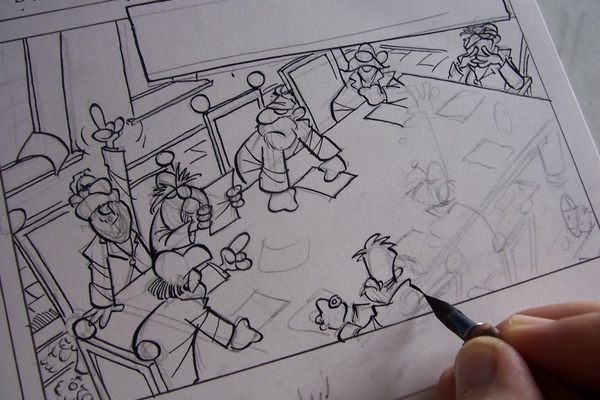By Karl Dixon
 Karl Dixon has been drawing cartoons professionally for over 15 years. He has worked for Dandy, the world’s longest running comic, and is the co-creator of Dandy’s leading comic character Ollie Fliptrik. Dixon is the author of two cartoon book collections, in addition to the three graphic novels series, Brabbles and Boggit – tales about a ridiculously over confident yellow mouse and a doom-and-gloom curmudgeon of a caterpillar for the European children’s market. On his site he offers many tutorials including this one about how to draw a cartoon page:
Karl Dixon has been drawing cartoons professionally for over 15 years. He has worked for Dandy, the world’s longest running comic, and is the co-creator of Dandy’s leading comic character Ollie Fliptrik. Dixon is the author of two cartoon book collections, in addition to the three graphic novels series, Brabbles and Boggit – tales about a ridiculously over confident yellow mouse and a doom-and-gloom curmudgeon of a caterpillar for the European children’s market. On his site he offers many tutorials including this one about how to draw a cartoon page:
5: I then begin inking in the panels. There are many ways to do this. Some artists use a dip pen, some are purists and prefer a brush, while the modern brood of professionals prefer to work with Sharpies.



